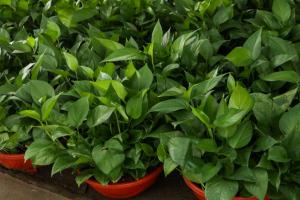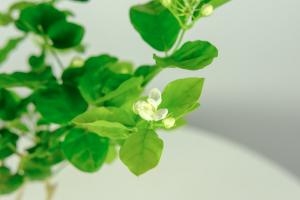How to Pot an Orchid Plant
Orchids are one of the most popular plants to grow indoors due to their beautiful flowers and unique appearance. Potted orchids can add a touch of elegance and beauty to any room or space. Here are some tips on how to pot an orchid plant:
Choose the Right Potting Mix
Selecting the proper potting mix is an essential part of potting an orchid plant. Orchids require well-draining soil that doesn't hold too much moisture. An ideal potting mix for orchids is a blend of bark, sphagnum moss, and perlite. The bark helps with airflow, while the moss retains moisture. The perlite provides drainage and prevents the soil from becoming too compacted.
Select the Right Container
It's important to choose the right size and type of container for your orchid plant. The container should be large enough to accommodate the roots and provide adequate drainage. Terra cotta and plastic containers are good options for orchids. Terra cotta containers allow for better airflow, while plastic containers retain more moisture. Make sure your container has drainage holes at the bottom to prevent water from accumulating in the soil.
Prepare the Plant
Before potting your orchid plant, inspect it for any damaged or decaying roots. Trim off the dead or rotten roots, leaving only healthy roots. If your orchid has been recently watered, allow it to dry out for a day or two before repotting. This will help prevent waterlogged soil and root damage.
Potting the Orchid Plant
Now that you have your potting mix, container, and plant ready, it's time to pot the orchid. Add enough potting mix to the container so that the root system fits snugly. Make sure the roots are spread out evenly and not bunched up. Gently pack the soil around the sides of the container, making sure not to damage the roots. Firmly press down to ensure the plant is stable in its new home.
Caring for the Newly Potted Orchid
Once you've potted your orchid, it's essential to care for it properly. Water your orchid sparingly, only when the potting mix has dried out. Overwatering can lead to root rot and other diseases. Fertilize your orchid every few weeks with a balanced fertilizer. Keep your orchid in bright, indirect sunlight, and provide proper ventilation to prevent moisture buildup.
Conclusion
Potting an orchid plant may seem intimidating, but with the right preparation and guidance, it can be a straightforward process. Remember to select the proper potting mix and container, prepare your plant beforehand, and care for it correctly once potted. Following these simple instructions will help ensure the successful growth and blossoming of your lovely orchid plant.

 how many times do yo...
how many times do yo... how many planted tre...
how many planted tre... how many pine trees ...
how many pine trees ... how many pecan trees...
how many pecan trees... how many plants comp...
how many plants comp... how many plants can ...
how many plants can ... how many plants and ...
how many plants and ... how many pepper plan...
how many pepper plan...































